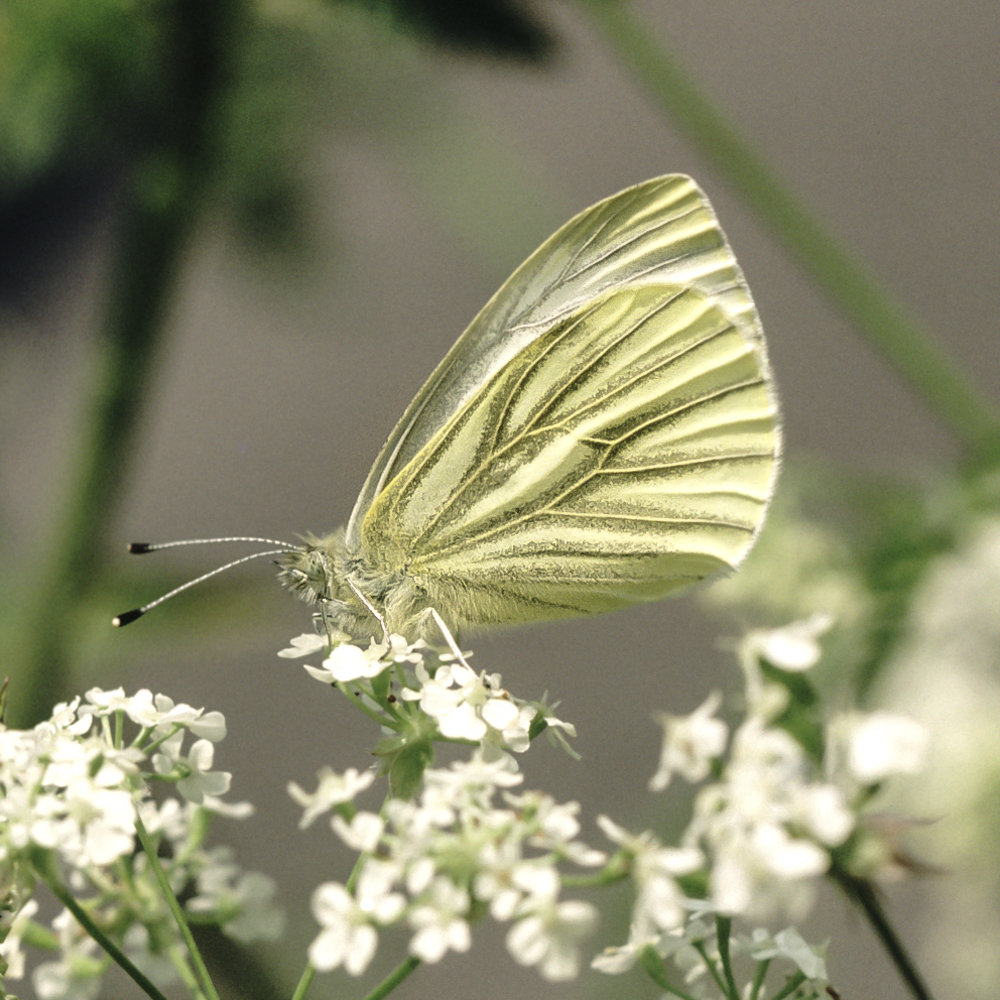Butterflies
Skippers
Whites
Hairstreaks
Blues and Coppers
Admirals
Vannesids
Fritallaries
Browns
First Emergence
| Year | First | Second |
| 1976 | ||
| 1977 | ||
| 1978 | ||
| 1979 | ||
| 1980 | May 4 | |
| 1981 | April 8 | |
| 1982 | April 16 | |
| 1983 | April 23 | |
| 1984 | April 23 | |
| 1985 | April 19 | |
| 1986 | April 29 | |
| 1987 | May 5 | |
| 1988 | ||
| 1989 | ||
| 1990 | ||
| 1991 | ||
| 1992 | ||
| 1993 | ||
| 1994 | ||
| 1995 | ||
| 1996 | Apl 20 Ey | |
| 1997 | ||
| 1998 | ||
| 1999 | ||
| 2000 | ||
| 2001 | ||
| 2002 | ||
| 2003 | ||
| 2004 | ||
| 2005 | ||
| 2006 | ||
| 2007 | ||
| 2008 | ||
| 2009 | ||
| 2010 | ||
| 2011 | ||
| 2012 | Mar 30 BN | |
| 2013 | May 1 HE | |
| 2014 | June 10 BC | |
| 2015 | May 20 Bic | |
| 2016 | ||
| 2017 | ||
| 2018 | ||
| 2019 | April 19 BC | |
| 2020 | April 5 BC |
Map of area covered for records
Butterfly Survey 1976-2020
Green Veined White Pieris napi

underside
Wingspan - 48 mm
The green veined white is more of a 'wild' butterfly than it is an urban butterfly, hence it is more common around woodlands and lanes where its foodplants are more likely to be found. I have recorded this butterfly from early Spring onwards and it is present in Bromley, Orpington and from Eynsford to Otford - and almost everywhere else, suburban and country.
Habit: much more likely to be found flying above head height and around trees than the small white, which it superficially resembles on the wing. Gaps in recorded years are not significant overall with this species
Double brooded: overwinters as a distinct pale pupa, which can be found harnessed to twigs and the stems of large wild plants.
Larval Foodplant: Charlock, garlic mustard, water cress, etc.
Status: not under threat in our area - numbers fluctuating year by year.
WH - White Hill Shoreham (inc Fackended), BC - Bromley Common, Ha - Hayes --BN -Bromley North , Ey- Eynsford (in Prestons), Lull - Lullingstone, Orp - Orpington Bic - Bickley
